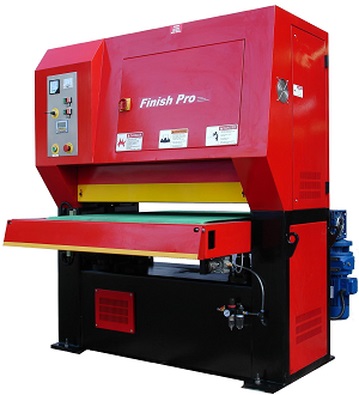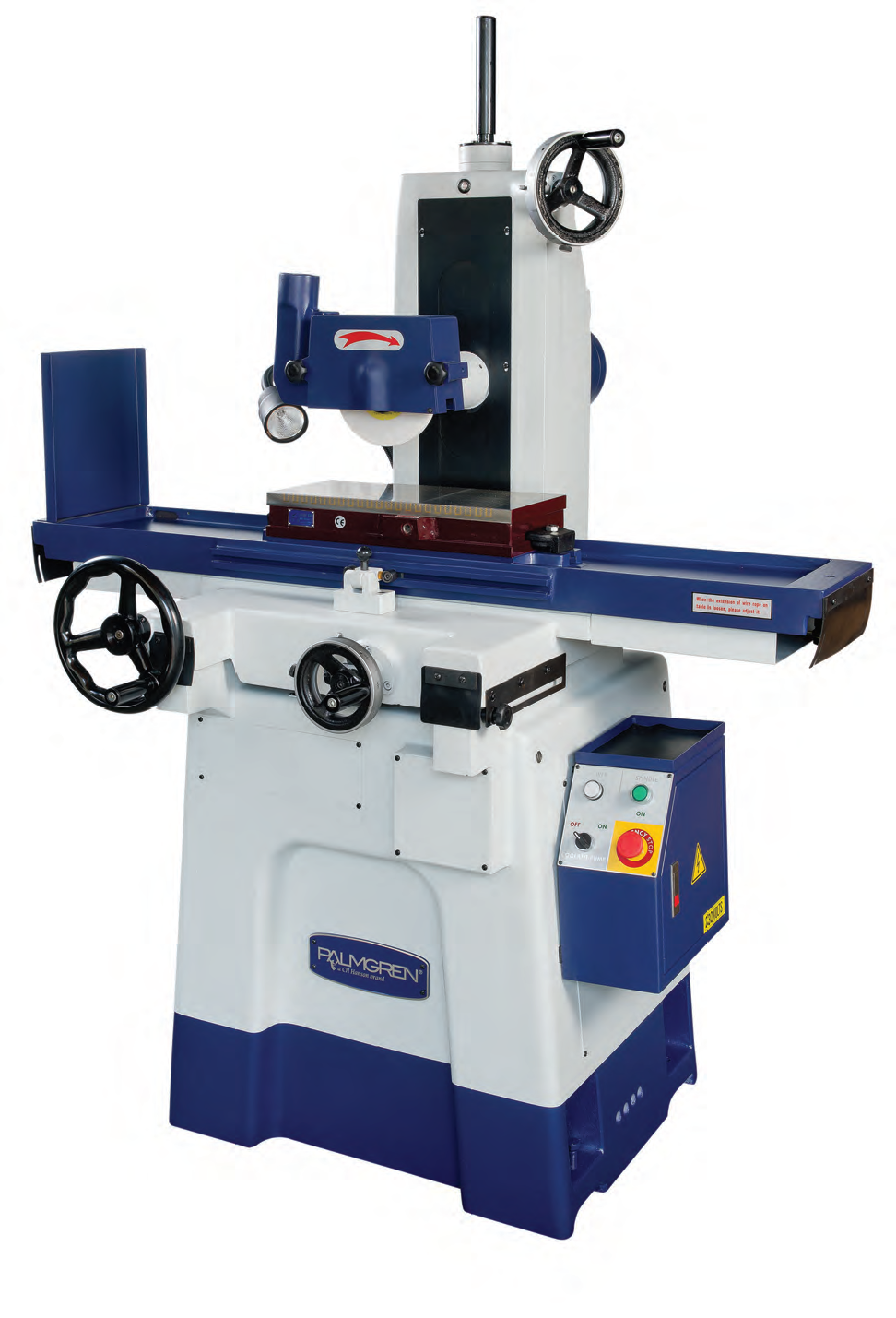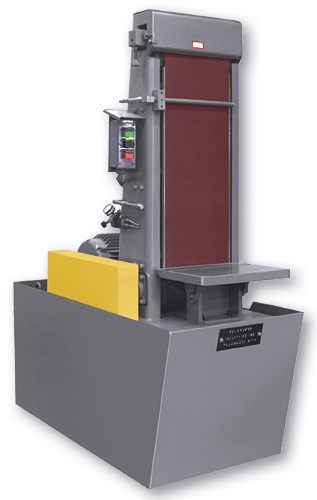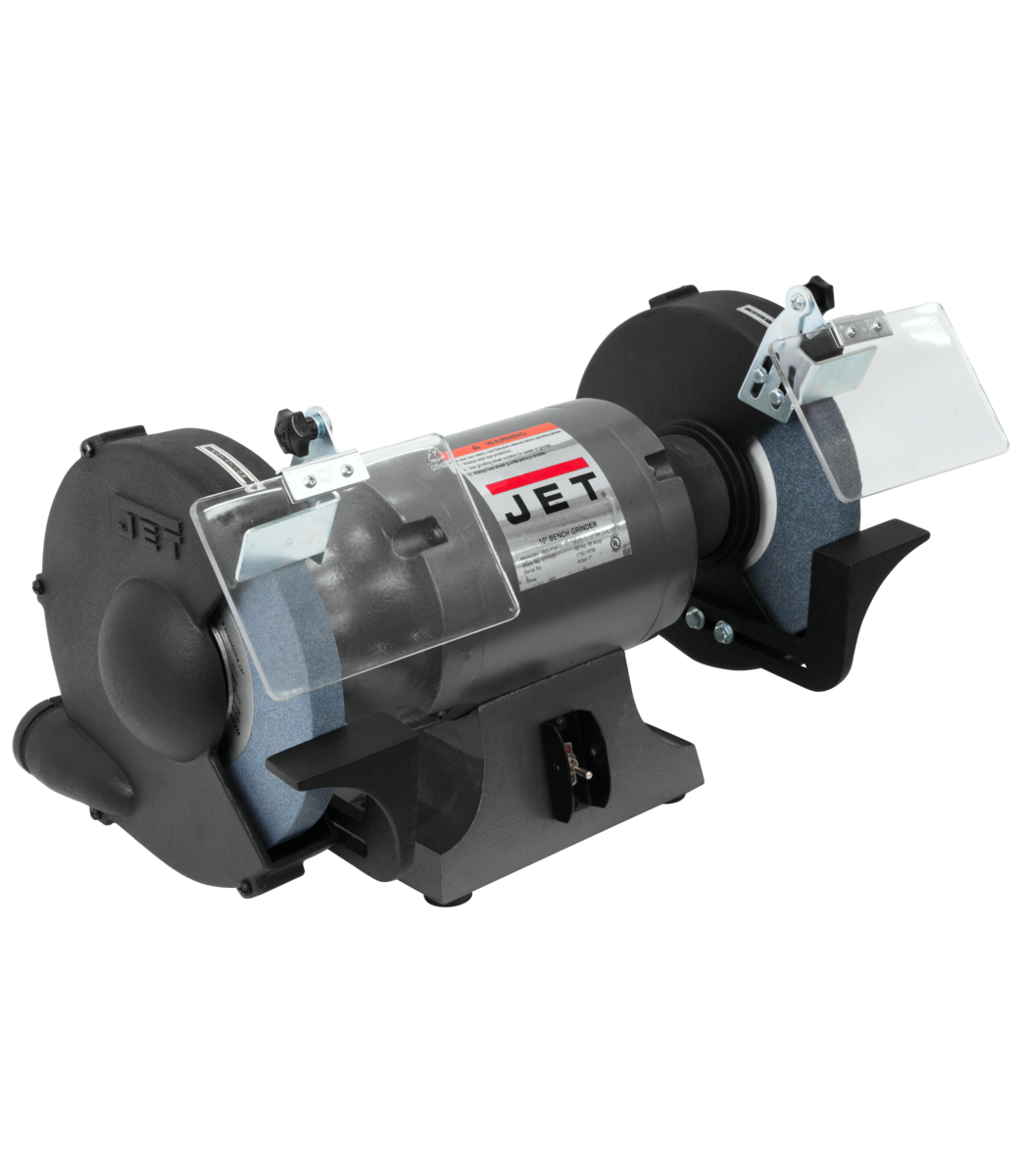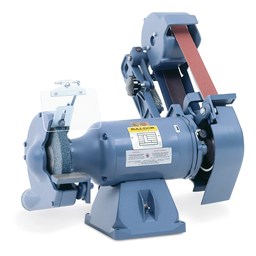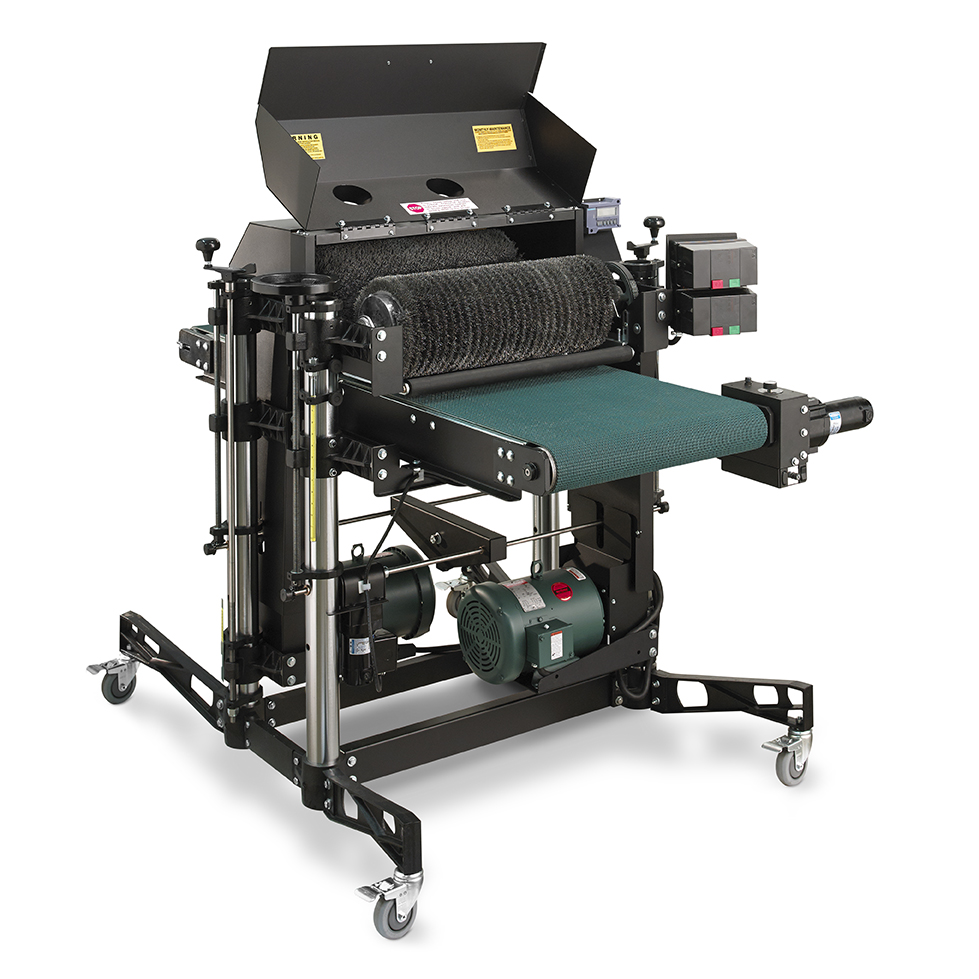Elite Metal Tools Articles
Industry news, tips, and updates on all things Elite Metal Tools
Metal Sanding & Grinding: What Machine Do You Need?
Whether it be excess material, a deformity in the metal, or a sharp edge that needs removed, using sanders and grinders is daily task for most metalworkers. In many cases, with new projects or products, you may not know what tool or machine is best for your application. When working with abrasives and metal, both effectiveness and safety are high priorities. The goal, whenever using abrasives, is to remove material from the work piece. Depending on the size of your work piece, amount of material needing removed, and desired speed of operation, different machines may fit better for your shop.
Wide Belt Sanders
Generally used by larger operations, wide belt sanders use abrasives on the face of a metal sheet or plate. Elite offers machines between 25” in width to 52” in width. This style machine guides the metal through using a conveyor and sands the top side using a drum and sanding belt. In most models, the drum and belt osculate. This ensures a more uniform sand and reduces the risk of scratching the surface of the metal. Wide belt sanders are commonly used for:
- Deburring large, flat material
- Removing slag & dross after plasma cutting
- Slightly changing a material’s thickness
- Creating a better surface for finishing or welding
Surface Grinders
Surface grinding machines are one of the most reliable, versatile, and precise grinding machines on the market. Similar to metal mills and mill drills, the table of the surface grinder moves on two axes, and the cutting arm moves on one axis (up and down). The three axes of the surface grinder allow the operator to be more precise than when using a hand or bench grinder. These machines are offered in manual versions, as seen here, or with CNC controls. Surface grinders are the machine of choice for:
- Quickly reducing thickness
- Creating tooling (punches, dies, etc)
- Repairing/Sharpening tooling
- Precision notching, grooving, shaping, squaring, etc.
- Precision surface finishing
Industrial Belt Sanders
Free standing Vertical Belt Sanders are indispensable machines ranging from 1 hp to 20 hp and have belts up to 14” wide. Their versatility and range of options prove their importance in any shop or business. The belt is generally run between two drums and are either vertically or horizontally oriented. The table is used to stabilize the workpiece while sanding on both the vertical and horizontal variants. Though most belt sanders are dry sanders, wet belt sanders reduce the amount of metal shavings or dust in the air and also slow the rapid heating of a workpiece. Industrial belt sanders are great for:
- Free-hand shaping/sanding of edges
- Deburring small-medium sized pieces
- Smoothing sharp corners
- High-Volume sanding operations
- Finishing/Buffing workpiece surfaces
Note: It is not recommended to attempt to remove large amounts of material with a sander. Utilizing other tools such as grinders, saws, plasma torches, etc. is a safer and faster option.
Belt Grinders/Bench Grinders
Though very similar to belt sanders, belt grinders provide a little more flexibility when working with small workpieces and components. Unlike belt sanders, belt grinders generally use tougher abrasives in their belts—many times made of aluminum oxide, silicon carbide, or ceramic. Belt grinders are often benchtop machines and include a grinding wheel or disk. There are also handheld variants of the belt grinder. Bench grinders and belt grinders go hand-and-hand due to the tendency to combine the components into one machine. These machines are incredibly versatile and a staple in every shop. They are great machines for:
- Working with concave or curved material
- Grinding small components
- Sharpening tools, blades, etc.
- Removing large amounts of material
- Finishing material
- Deburring material
- Removing Edges
- Much More
Brush Sanders
Operating similar to wide belt sanders, brush sanders use a feed belt to push flat material under the sanding/buffing brushes. Unlike the machines previously listed, the brush sander does not use belt or disc abrasives. Rather, brushes affixed to a drum are spun in the opposite direction of the fed material. These brushes are easily interchangeable providing variety in bristle strength for different materials. Brush sanders are suitable machines for:
- Removing minor defects
- Polishing
- Creating Directional graining
- Oxidation/Rust removal
- Minor deburring
Niche Sanding/Grinding Machines
Some sanding and grinding tools are made for very specific applications. These tools are not very versatile, but can be incredibly useful depending on your shop or business.
- Weld Shavers
- Weld shavers grind weld beads to be flush with the material. These tools are great for creating clean, finished pieces. Weld Shavers come in varieties that can work on both flat surfaces and the interior of angled welds.
- Shape Bevelers & Bevel Mills
- Though these do not generally use abrasives to remove material, beveling machines are used to deburr edges in similar fashion to grinders or sanders. These machines are more precise on straight edges and the interior of curved edges. Beveling tools can deburr & bevel the interior of pipes and circles with more ease than grinding and sanding tools.
